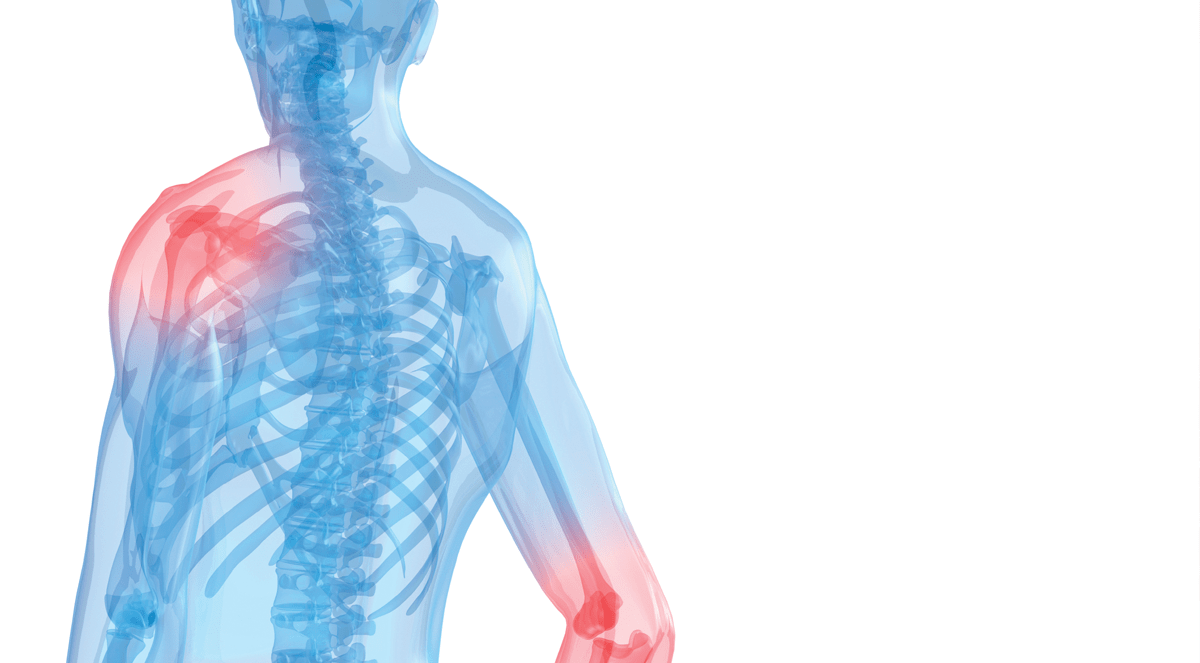New research was presented at No Life Limited by Pain 2015, the annual meeting of the American Academy of Pain Management, from September 17 to 20 in National Harbor, MD. The features below highlight some of the studies that emerged from the conference.
Ultrasonic Percutaneous Tenotomy for Chronic Tendon Pain
The Particulars: Research indicates that anti-inflammatory and physical therapy approaches to treating chronic tendon pain often fail due to patients developing painful disorganized collagen fibrosis within the tendon. This can interfere with the normal healing process. Minimally invasive ultrasonic percutaneous tenotomy is used to remove these collagen matrices and may help treat chronic tendon pain by allowing for normal tissue healing.
Data Breakdown: For a study, patients with chronic refractory tendon pain for an average of 26 months underwent minimally invasive ultrasonic percutaneous tenotomy by a single operator. At 2 weeks after the procedure, 93% of patients reported a significant improvement in pain scores. No complications were observed.
Take Home Pearl: Ultrasonic percutaneous tenotomy appears to be a safe and effective minimally invasive procedure for treating chronic refractory tendon pain.
ADD & Chronic Pain
The Particulars: Studies of patients with centralized pain have shown that the majority have hyperarousal of the autonomic nervous system, loss of inhibition of descending pain pathways, and catecholamine deficiencies. However, few studies have assessed whether attention deficit disorder (ADD) is a comorbidity to consider among chronic pain patients.
Data Breakdown: For a study, patients with chronic pain completed a questionnaire regarding deficiencies in concentration, attention, distractibility, impulsivity, reading and retention, coordination, temper, and short-term memory. A positive answer to five or more questions was considered indicative of the presence of ADD. Among participants, nearly 40% answered five or more questions in a positive manner.
Take Home Pearl: A significant number of chronic pain patients appear to report classical symptoms of ADD. More research is needed to determine if treating ADD can lead to better pain management outcomes.
Arachnoiditis in Chronic Back Pain
The Particulars: Research indicates that low back pain caused by arachnoiditis is increasing in incidence. Although recent reports show that specialized pain and neurogenic management lead to significant improvements and help recovery in patients with arachnoiditis, methods for identifying these patients are not well defined.
Data Breakdown: For a study, patients with MRI-diagnosed arachnoiditis completed a 21-item questionnaire with questions that focused on the presence of positional pain, bowel and bladder function, physical dysfunctions, characteristics of the pain, and symptoms indicative of cerebrospinal fluid obstruction. All patients in the study reported that their pain was constant and that severe pain occurred with standing too long, which caused them to sit or lie down, and jerking or tremors in their legs. More than 88% of patients reported intense episodes of heat and sweating, difficulty with initiating urination and/or defecation, and episodes of blurred vision.
Take Home Pearl: Back pain patients with an inability to stand long durations of time without severe pain, tremors or jerking in the legs, intense episodes of heat and sweating, difficulty initiating urination or defecation, and episodic blurred vision should be suspected to have arachnoiditis.
Biofeedback Stimulation Technology for Chronic Pain
The Particulars: Biofeedback stimulation technology for pain management has been used outside of the United States to manage chronic pain. However, studies validating the findings of a foreign clinical trial on the efficacy of biofeedback stimulation technology for pain management are lacking.
Data Breakdown: For a study, patients with various types of chronic pain were treated with biofeedback stimulation technology. Pain level, pain severity, and pain interference were recorded before, immediately after, and 24 hours after treatment. Pain levels decreased from 62 to 19 on a scale of 0-100 among patients with biofeedback stimulation technology. These patients also had decreases in pain severity from 5.40 to 2.45 on a scale of 0-10. In addition, pain interference decreased from 4.9 to 2.2 on a scale of 0-10 at 24 hours post-treatment for recipients of biofeedback stimulation technology. No adverse events were reported.
Take Home Pearl: Biofeedback appears to effectively and safely treat pain among patients with various types of chronic pain.
Chronic Pain in Primary Care Patients
The Particulars: Data are lacking on the prevalence of self-reported chronic pain in primary care. In addition, few descriptive analyses have been conducted in this setting.
Data Breakdown: For a study, adults at two primary care clinics were administered the electronic Chronic Pain Questions (eCPQ) questionnaire, a 14-item, validated instrument that is used to screen for chronic pain and monitor patient outcomes. More than one-half (52.7%) of participants self-reported chronic pain. Among chronic pain patients, the mean age was 46.6 years and
- 65.9% were Caucasian
- 66.4% were women.
- 48.1% were employed full- or part-time.
- 14.5% were on disability.
Chronic pain was reported as mild by 18.8% of patients, moderate by 41.5%, and severe by 39.6%.
Take Home Pearls: More than one-half of primary care patients appear to self-report chronic pain, which is substantially higher than the approximate 30% rate suggested by a 2011 Institute of Medicine report. Of these patients, the majority reported having moderate or severe pain.


